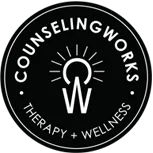Written By: Gabe Gonzalez, MA
Trauma impacts our lives in many ways, emotionally, physically, and interpersonally. One can have an easy understanding of how their trauma affects their emotions, physical health, or how they view themselves. An often-overlooked aspect of trauma is how it impacts one’s ability to connect with others, such as family, friends, significant others, and other individuals we encounter daily.
Trauma & Fostering Connection
As a Trauma-Informed Counselor, my work with clients not only involves processing the traumatic event(s) but also identifying how one navigates the world after experiencing an emotionally altering event(s). These events shape one’s attitude, worldview, and perception of others, making it difficult to foster interpersonal connections, regardless of the type of relationship one is seeking. If one experiences a traumatic event or complex trauma, multiple events over a period, or one’s lifetime, the mind and body create safeguards to protect from future dangers or hypervigilance to certain behaviors or patterns in others.
So, how does this manifest in our relationships?
I have seen it countless times throughout my work: patterns of emotional distance from our loved ones, internalizing our thoughts/emotions, and avoidance of conflict and transparent communication. Due to the impact that trauma has on one’s nervous system, we feel as if the consequences of communicating our feelings or allowing ourselves to be vulnerable with someone can have catastrophic consequences based on past experiences.
Think of it as the Hedgehog Dilemma, written by philosopher Arthur Schopenhauer and popularized by Sigmund Freud. A group of hedgehogs join to combat the harsh elements of winter but experience extreme difficulty due to their quills. They want to survive the elements of the outside world, but it is painful to rely on each other because their physiological makeup does not allow them to. Although our quills (nervous system) provide a protective layer to our physical well-being, it makes it more difficult when we experience harsh circumstances we cannot control (trauma) to be able to effectively confide in those around us.
How do we progress forward?
So, suppose our nervous system protects us from potential dangers outside of our control. How do we allow ourselves to open up to our loved ones and feel more deeply connected to them despite our traumatic experiences? Part of that process, on an individual level, is increasing our awareness both in our minds and bodies. Something I often ask clients when they are speaking about strong emotions they experience within relationships is “Where are we feeling that in our body?” Sometimes it feels as if a heavy weight is placed on our shoulders, a churn in our stomach, or maybe a numbness in our hands or feet. By creating more awareness within us, it becomes less difficult to identify emotional triggers and easier to know when to utilize our coping strategies.
Polyvagal Theory helps us understand how our nervous system is intertwined with our emotions and how we foster connections with others. An emphasis on how to regulate our nervous system when we are experiencing a trigger is physical engagement. If we are with a trusted friend, family member, or partner, it can make a significant difference in ensuring that we feel safe both physically and emotionally. Not to say that some of these exercises cannot be practiced if we are alone, but the techniques I will be providing are meant to have another individual participating to be most effective.
One exercise I like to offer for clients is engaging in prolonged eye contact with their partner. This not only helps both parties co-regulate their emotions but also helps increase emotional intimacy within the relationship. Sitting in a comfortable, upright position and gazing into the other person’s eyes for about 2-3 minutes in silence helps establish the safety we need to regulate the overwhelming feelings we may be feeling. It is natural to feel a bit awkward while doing an activity like this, so if we need a minute to separate and return to the exercise, that is completely okay. Strategies to use are very similar in essence, such as matching each person’s voice and tone by humming a calming melody, rhythmic breathing, noticing our environment with our 5 senses, or even just focusing on our physical touch (Ex: holding hands/back rubs).
I have provided the previously mentioned resources to clients in individual therapy if they presented concerns within their relationships, as well as in working directly with couples in couples therapy. These exercises simultaneously increase our mind and body awareness and increase our emotional intimacy with our loved ones. Witnessing that growth over time with clients is both rewarding as a therapist and further proof that these evidence-based practices are effective when working with individuals with significant trauma.
Relationships can be complicated, especially when past experiences linger. If you’re ready for a little extra support, we’re here—contact us anytime.
Resource Links:
https://www.psychologytoday.com/us/blog/science-and-philosophy/202003/the-hedgehogs-dilemma






